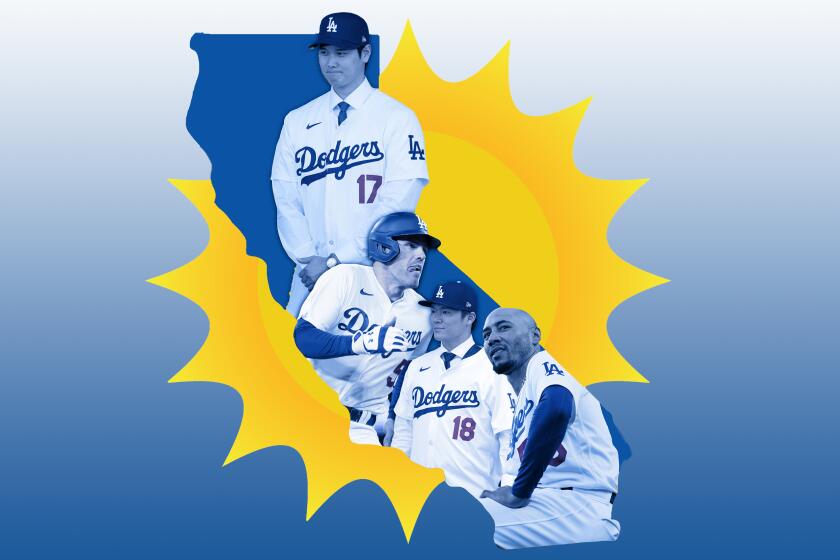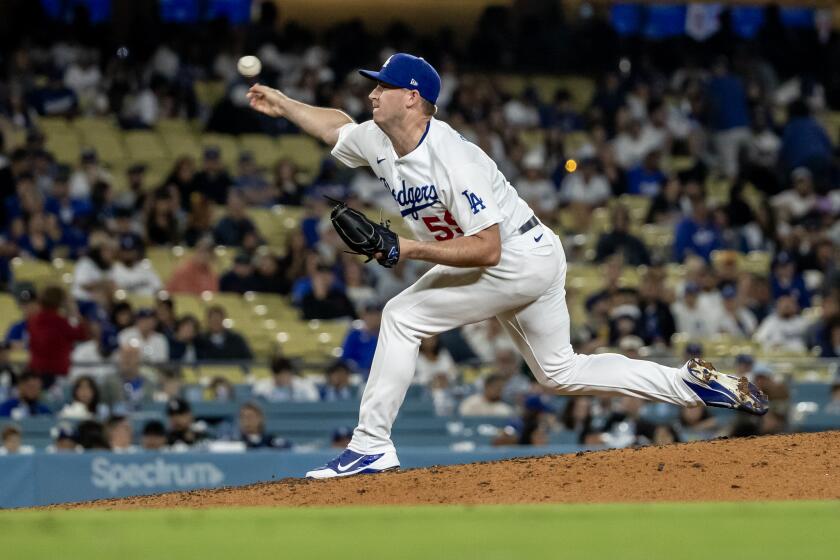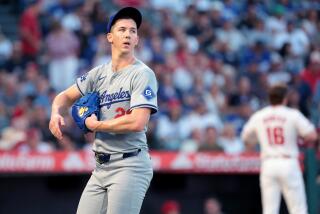Column: Dodgers’ pitch made them offseason winners. Is it enough to win in October?
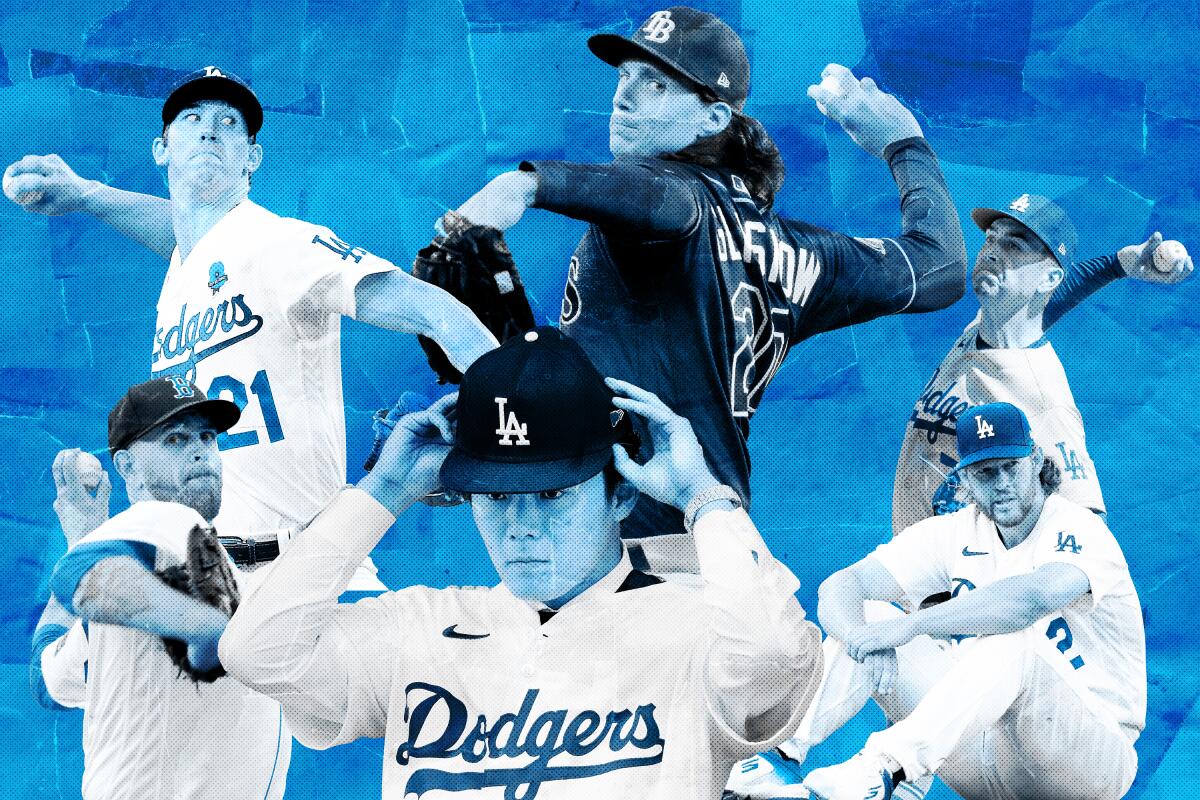
DodgerFest, the $10-to-enter iteration of what the Dodgers used to call FanFest, will be staged Saturday. The event will feel like a celebration. Following years in which they exercised a degree of financial restraint that limited their World Series prospects, the Dodgers finally won an offseason.
They kept together the nucleus of a 100-win team and bolstered it by signing the best player in baseball. The addition of Shohei Ohtani was just the start of a $1.2-billion winter splurge, with a significant part of that directed toward addressing the obvious shortcoming of the roster, starting pitching.
The Dodgers will have a luxury-tax payroll well over $300 million, which has obscured an uncomfortable reality: As much as they invested, they still might not be the World Series favorites.
The Dodgers can sell fans on excitement and winning. The other California teams? Not so much.
The team will reach the postseason. There’s a very real possibility, however, the Dodgers could enter the playoffs similar to how they did last year, with virtually no chance of winning a championship.
To be clear, the Dodgers were right to spend as much as they did. They owed their loyal fans that much. What’s less clear is whether they were smart in how they spent their money.
In rebuilding the rotation, the typically cautious Dodgers front office placed some high-risk, high-reward wagers. The team raised its ceiling but didn’t raise its floor.
Yoshinobu Yamamoto and Tyler Glasnow have replaced Julio UrÃas and Clayton Kershaw at the front of their rotation. Walker Buehler will step into the vacancy created by the absence of Tony Gonsolin, who will sit out the season recovering from Tommy John surgery.
James Paxton will be the team’s reclamation project of the year, a position that was occupied last year by $13-million bust Noah Syndergaard. Flamethrower Bobby Miller will return with a season of major league experience to his name.
The staff is more talented than last year’s but is the group any more reliable?
The Dodgers could have a rotation that is the best in baseball — or one that is no better than it was last year.
At this point, can the Dodgers really say they’re a better team than the Atlanta Braves?
Scenario 1: Yamamoto, who was signed for $325 million, successfully transitions from pitching once a week in Japan to shouldering a more demanding workload in the majors. The injury-prone Glasnow, who was acquired in a trade with the Tampa Bay Rays and signed to a $136.5-million extension, establishes new career highs in starts, and becomes a Cy Young Award candidate.
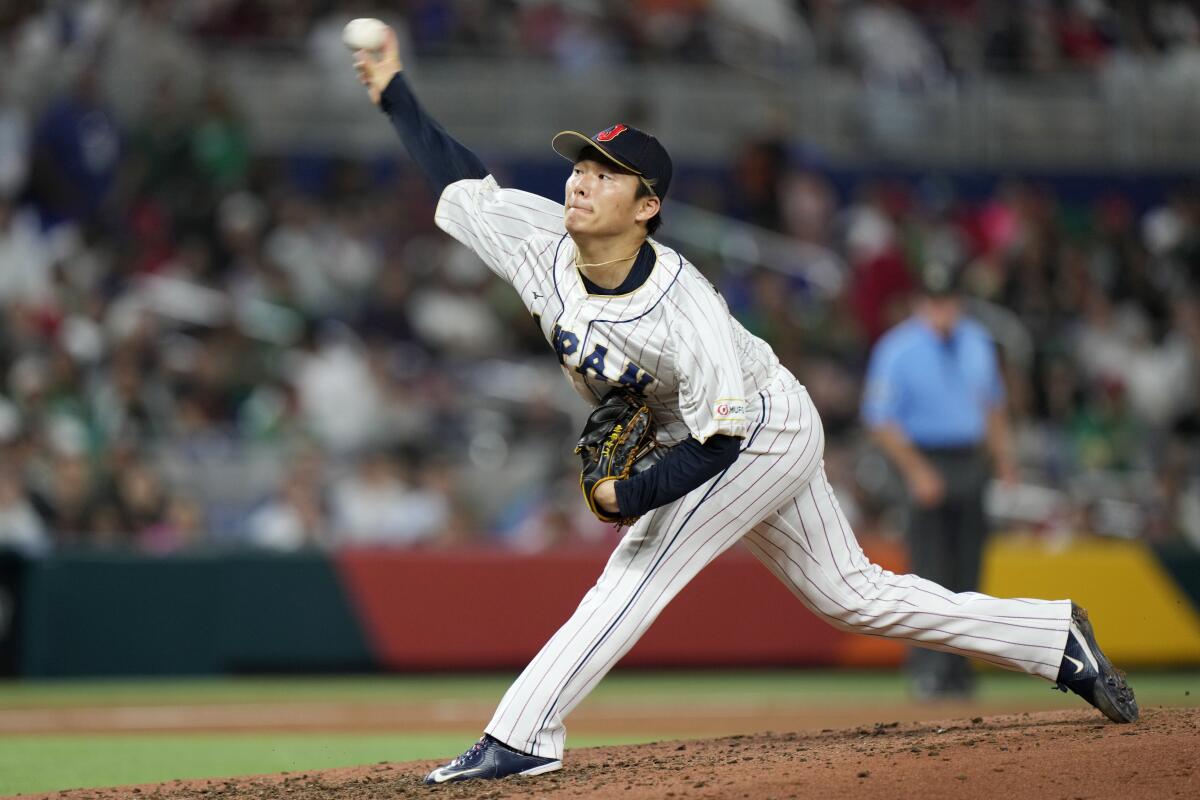
Buehler pitches how he did before he underwent his second elbow reconstruction. Another injury-prone starter on whom the Dodgers took an $11-million flyer, Paxton, becomes a steady presence in the back half of the rotation. Miller continues his evolution from thrower to pitcher. The Dodgers have too much of everything, overwhelm their opposition, and win their first full-season World Series in 36 years.
Scenario 2: The 5-foot-10 Yamamoto wears down over the 162-game season. Glasnow breaks down yet again, and the 120 innings he pitched last year remain his career high. Buehler falls into the 45% to 50% of Tommy John revision patients who don’t return to their previous level of performance.
The 35-year-old Paxton, who finished last season on the disabled list and pitched six games in the three previous seasons combined, has nothing left. Miller’s development stalls. The rotation is once again in a shambles in October and the Dodgers crash out in the first round.
The two scenarios are equally plausible, which feels problematic. The $470-plus million the Dodgers spent to upgrade their rotation was basically spent on high-priced lottery tickets.
In their defense, they have more lottery tickets than they did last year, which gives them a greater margin for error. If, say, Paxton doesn’t perform up to expectations, it won’t be as damaging to the team as Syndergaard’s failure was last season.
Their depth, which includes a couple of second-year pitchers in Gavin Stone and Emmet Sheehan, will permit the Dodgers to carefully manage the workloads of their more delicate arms.
There’s a chance Kershaw could still return to the Dodgers and provide them with help late in the season. Kershaw, a free agent, is expected to sit out at least the first half of the season as he recovers from shoulder surgery. Dustin May is recovering from an elbow operation and could also pitch this season.
The stakes are high. The Dodgers’ chances of winning a championship might be better in 2025 when Ohtani resumes pitching after recovering from his second major elbow operation, but that doesn’t mean they can afford to waste the opportunity in front of them this year.
More often than not, the Dodgers have revitalized the careers of middling pitchers and optimized the production of pitchers they have.
The Dodgers have three generational offensive talents in Ohtani, Freddie Freeman and Mookie Betts, and perhaps even a fourth in Will Smith. Ohtani turns 30 this year. Freeman will be 35 in September and Betts 32 in October. The team’s offense might never be as good as it will be this season.
The reputation of Andrew Friedman in Los Angeles is largely based on what he did early in his tenure as the Dodgers’ president of baseball operations. He was bold, dismantling a veteran-laden, championship-contending roster and transforming it into something considerably more sustainable.
Almost a decade later, Friedman has again taken extreme measures, this time by investing hundreds of millions of dollars in pitchers heavy on potential and light on track records. Friedman has pushed the Dodgers’ chips into the middle of the table. The team will either win big or lose big.
More to Read
Are you a true-blue fan?
Get our Dodgers Dugout newsletter for insights, news and much more.
You may occasionally receive promotional content from the Los Angeles Times.

